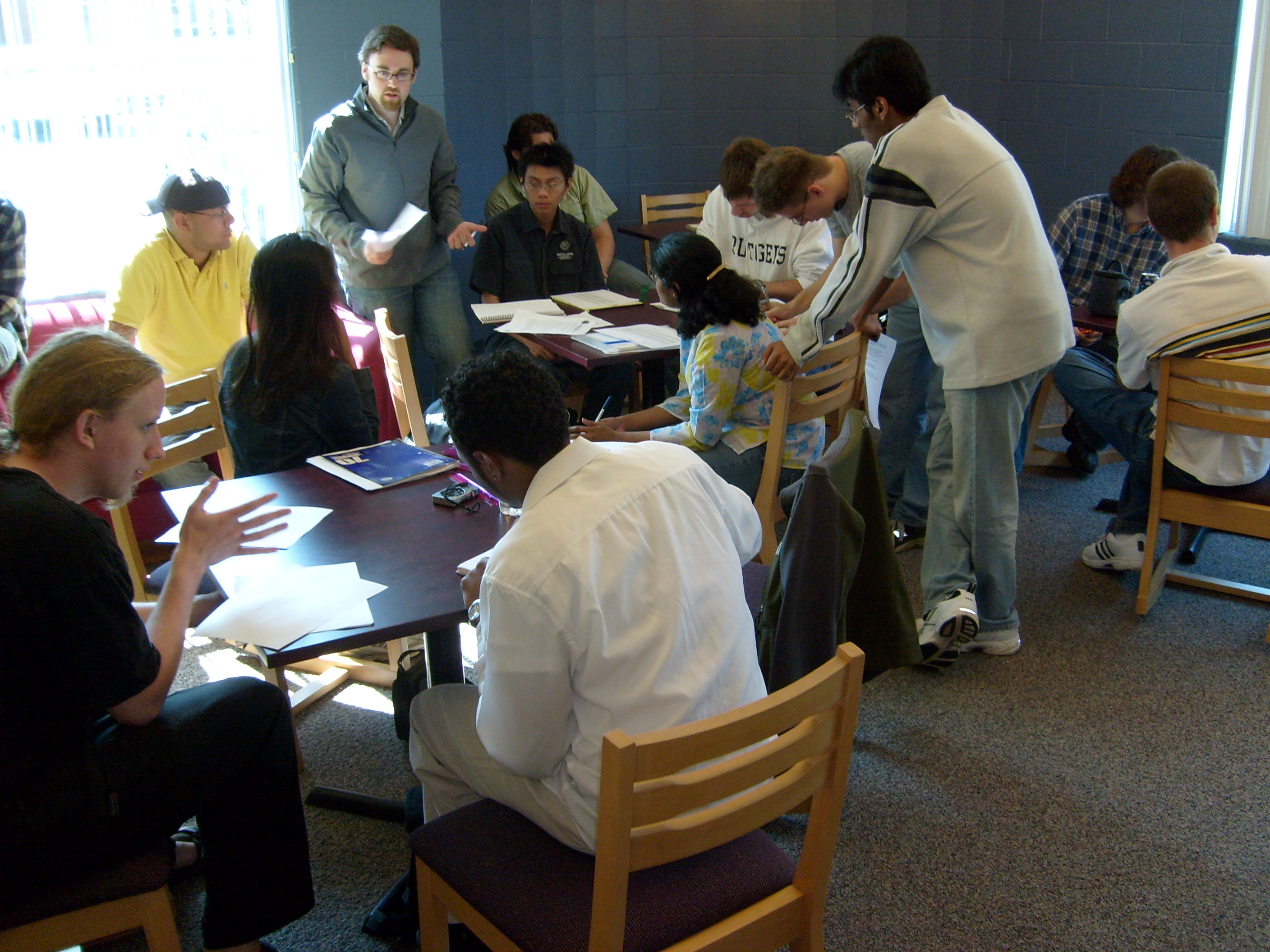
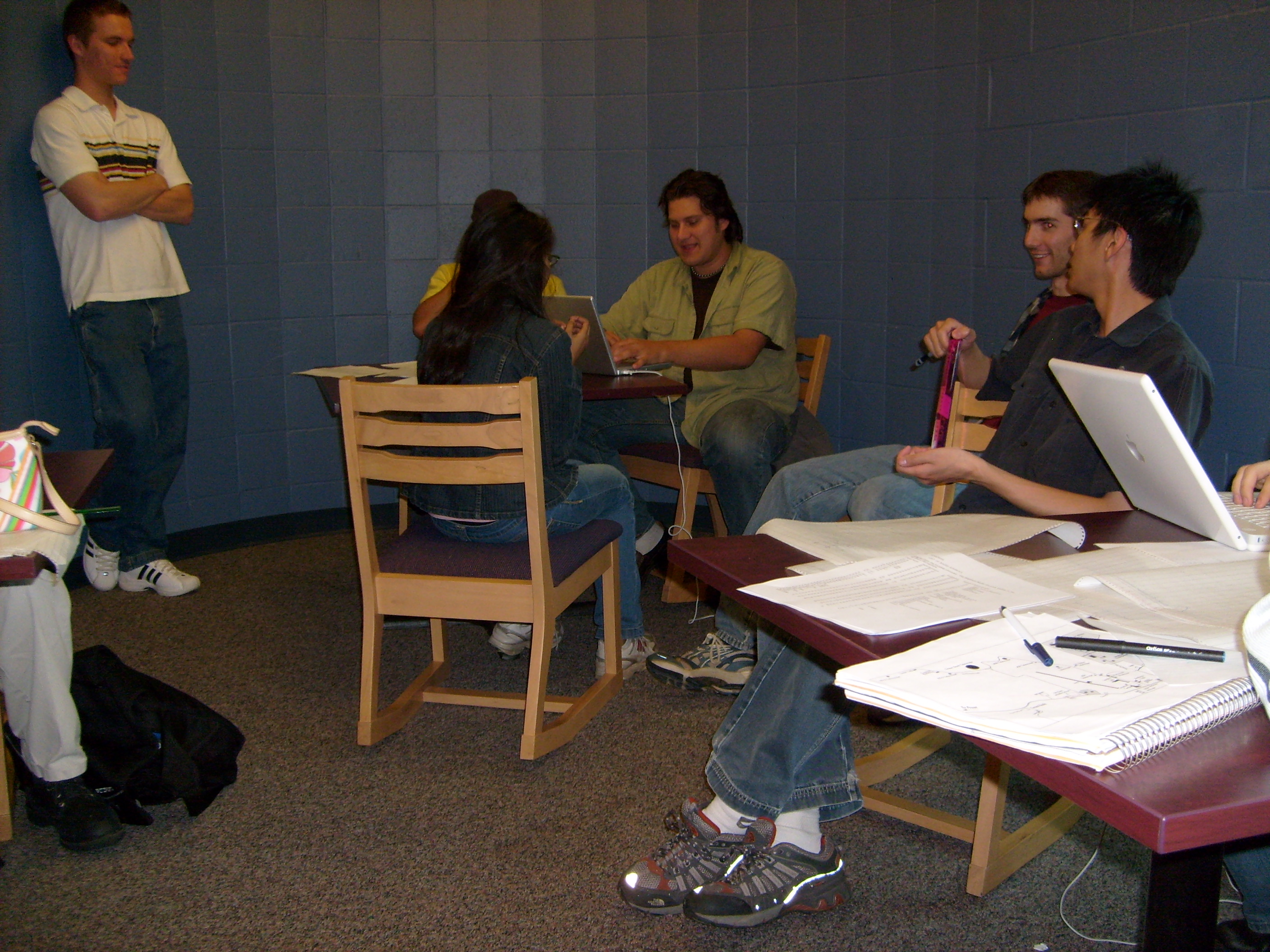
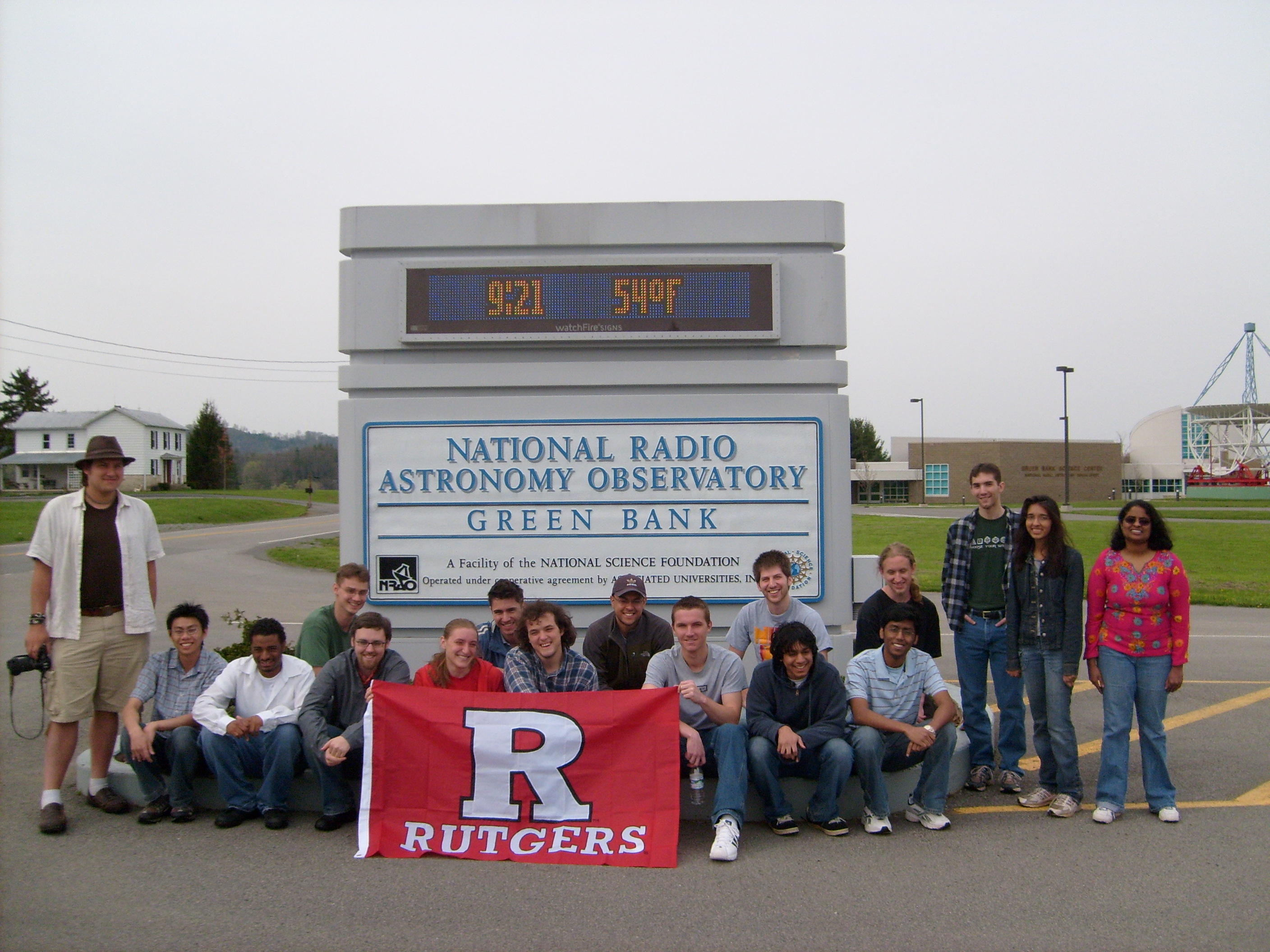
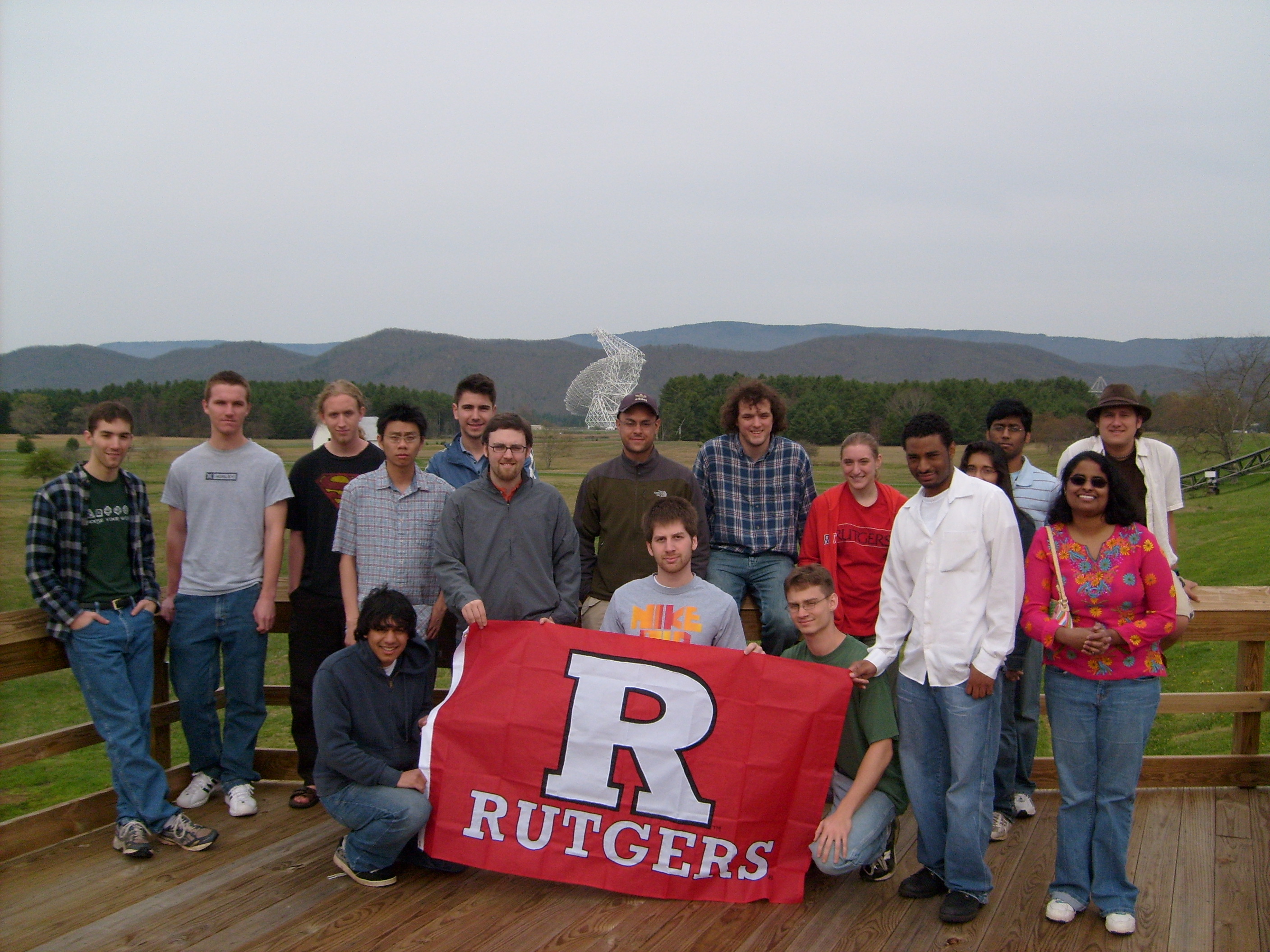
Pictures from class trip to the National Radio Astronomy Observatory in Green Bank, West Virginia (April 25-27, 2008):
 |
 |
 |
 |
|
Professor Andrew Baker Serin W309 Phone: 732-445-2544 Email: ajbaker[at]physics.rutgers.edu
Instructor |
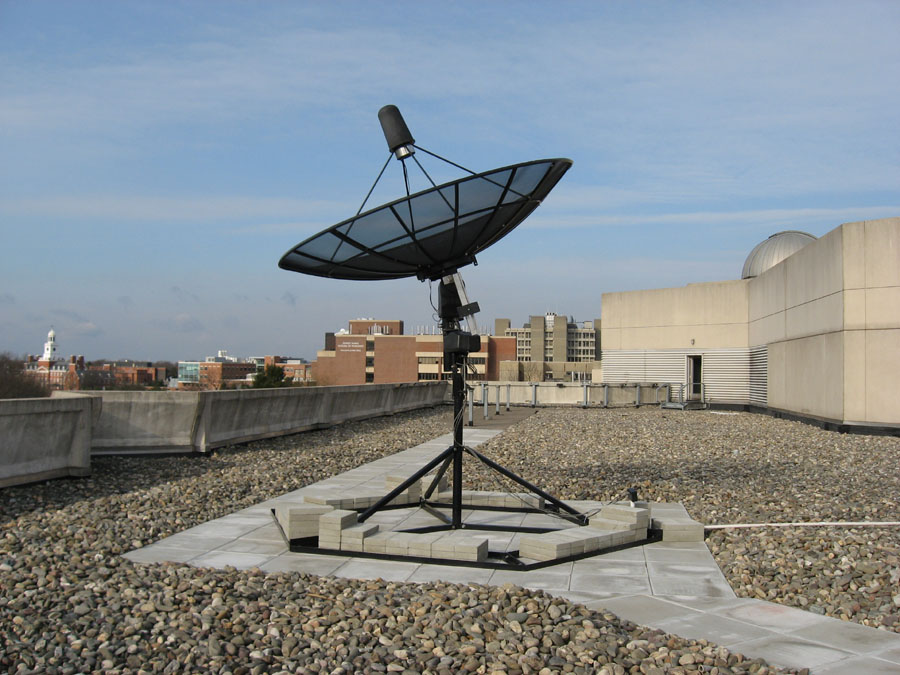
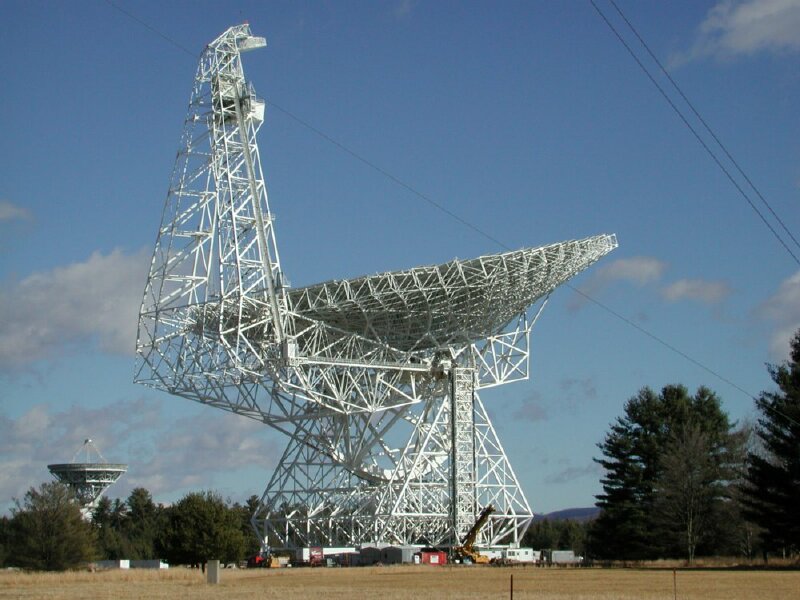
|
Course meetings
Lectures: Serin 401, Monday 10:20-11:40am
Labs: Serin 403b, according to your assigned weekly time slots
| SECTION | TIME | STUDENTS |
| A | Monday 5:00-6:20pm | Marcus Crews, Sumitha Karanam, Chris Matthews |
| B | Tuesday 12:00-1:20pm | Abhishek Golugula, Gray Kanarek, Calvin Ng |
| C | Tuesday 1:40-3:00pm | Alex Merced, Ben Shappee, Thomas Stelling |
| D | Tuesday 3:20-4:40pm | Basel Baghal, Gautam Jain, Adam Tomczak |
| E | Tuesday 5:00-6:20pm | Sonal Patel, Arthur Suszko, Bryan Urbanowicz |
Office hours
Every week: Monday 2:30-3:30pm and 6:30-7:30pm (Baker); Friday
2:00-3:00pm (Fadely)
Analysis weeks: One of us will be "on call" during each of the
regular lab section times (for the week of February 11th: Baker for sections
A and C, Fadely for sections B, D, and E).
Textbooks
This course does not have an official textbook. However, you may find it
useful (or just interesting!) to dip into Bracewell, The Fourier Transform
and its Applications, Rohlfs & Wilson, Tools of Radio Astronomy,
and Wall & Jenkins, Practical Statistics for Astronomers, all of which
are on reserve in the physics library. The online Essential
Radio Astronomy course developed by
Jim Condon and
Scott Ransom at
the
National Radio Astronomy
Observatory is also an excellent reference.
Overview
Here's the official course catalog listing:
"Observational study of the solar system, stars, and galaxies, using the Serin
3 meter radio telescope. Emphasizes computer techniques for data reduction and
analysis. Topics may include calibrating system properties, the variability of
the Sun, Jupiter, or quasars, and mapping the distribution of hydrogen in our
Milky Way galaxy and measuring its rotation."
I plan to teach this course so that by the end of it you will not only have experience acquiring and analyzing data from the (ahem) 2.3 meter telescope on the roof, but also an understanding of how astronomers use much larger (e.g., 100 meter) radio telescopes in their research, and what kinds of astronomical targets they observe.
Schedule
Lectures: The sequence of lecture topics may be updated during the
course of the semester. The last lecture is tentatively reserved for a topic
related to radio astronomy to be chosen shortly after spring break by the
students enrolled in the course. This will give you an opportunity to
make me sweat, thus exacting revenge for a semester's worth of quizzes and lab
reports.
Labs: There will be a total of six labs in this course. Each of the
first four labs will involve one week of observations and one week of analysis,
with lab reports due the following Monday in lecture. The fifth lab will
involve analysis of an existing dataset taken with an array of radiotelescopes.
The sixth lab will involve either a final set of observations with the 3 meter
telescope on the roof, or an observing trip to West Virginia.
NRAO trip: Provided that logistical arrangements can be worked out, a
class trip to the National Radio Astronomy Observatory's site in Green Bank, West Virginia
will be arranged for the weekend of April 25-27.
This will be a time-consuming trip (the drive alone takes seven hours each
way); however, it will give you a unique opportunity to see a research-grade
observatory located in the center of the National Radio Quiet
Zone, a variety of radio telescopes, and hands-on observing experience
with a more powerful instrument than what we have available in New Jersey.
Students who participate will be excused from the sixth lab.
| WEEK | LECTURE | LECTURE TOPIC | LAB | DUE |
|---|---|---|---|---|
| 1 | Jan 28 | course organization; introduction to radio astronomy | ||
| 2 | Feb 4 | lab # 1; radiative processes | Observation week # 1 | |
| 3 | Feb 11 | data analysis; statistics | Analysis week # 1 | |
| 4 | Feb 18 | radio observations of stars and planets | Observation week # 2 | Report # 1 |
| 5 | Feb 25 | radio observations of the interstellar medium | Analysis week # 2 | |
| 6 | Mar 3 | radio antennas | Observation week # 3 | Report # 2 |
| 7 | Mar 10 | radio telescopes | Analysis week # 3a | |
| 8 | Mar 24 | galactic structure | Analysis week # 3b | |
| 9 | Mar 31 | interferometry | Observation week # 4 | Report # 3 |
| 10 | Apr 7 | deconvolution | "Observation" week # 5 | |
| 11 | Apr 14 | gravitational lenses (guest lecture) | Analysis week # 5 | Report # 4 |
| 12 | Apr 21 | active galactic nuclei; very long baseline interferometry | Observation week # 6 (for students not visiting NRAO) |
|
| Apr 24 | Report # 5 | |||
| Apr 25-27 | visit to Green Bank, West Virginia | |||
| 13 | Apr 28 | cosmic microwave background | Analysis week # 6 (for students not visiting NRAO) |
|
| 14 | May 5 | student choice: current and future radio astronomy projects | Report # 6 (for students not visiting NRAO) |
Grading Your course grade will be based on a combination of four elements:
Other items